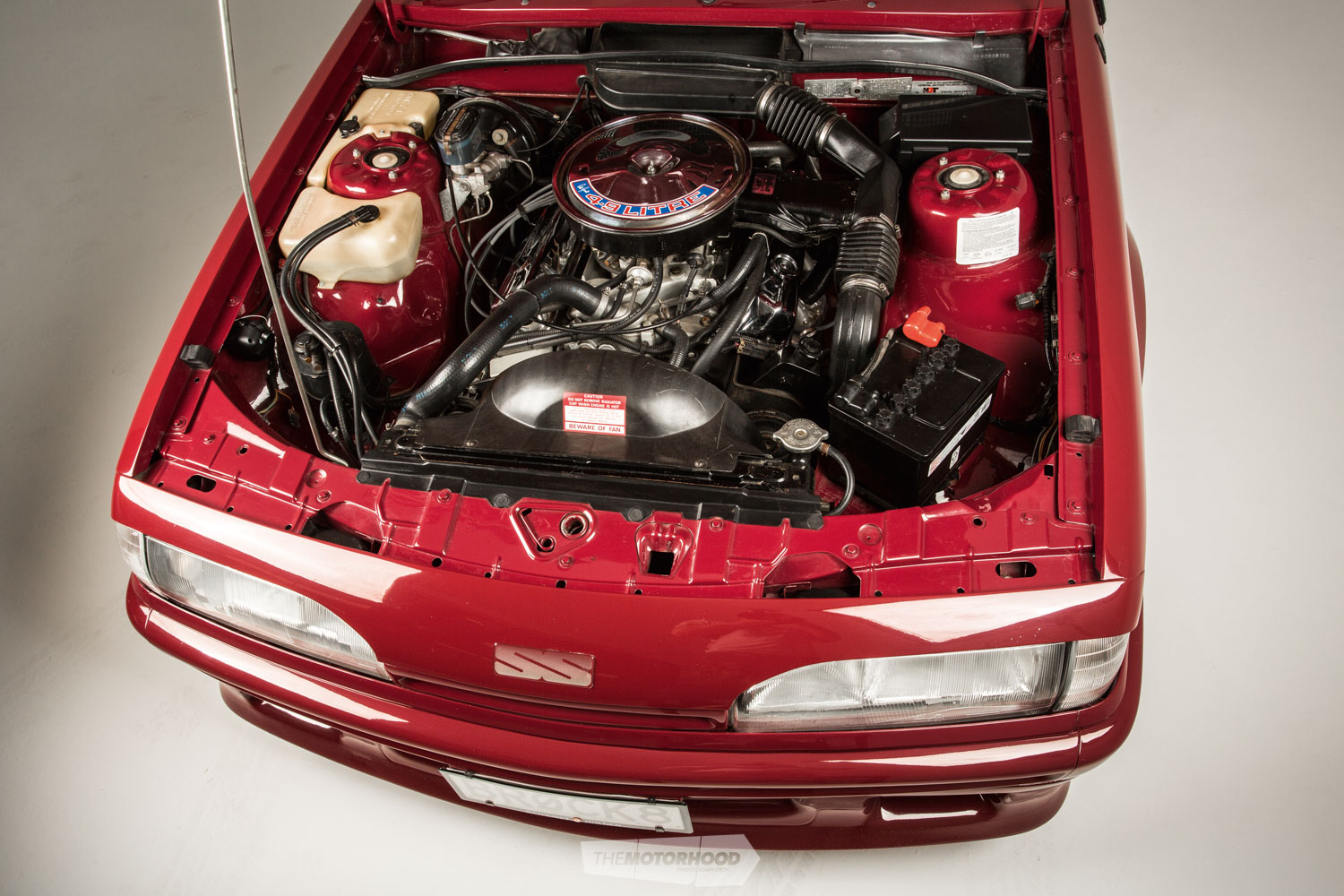The SS Group A series existed primarily as a homologation special, created specifically so that a racing-optimized version could be used for Group A touring-car racing.

The Holden Commodore SS Group A was a series of four motor vehicles built by Australian manufacturer Holden and then heavily modified by Holden’s official performance tuner — originally the Holden Dealer Team (HDT), then later Holden Special Vehicles (HSV). The SS Group A series of cars existed primarily as a homologation special, created specifically so that a racing-optimized version of the Holden Commodore could be used for Group A touring-car motor racing.
This 1987 Holden VL SS Group A Plus Pack was purchased by its current owner in 1998. Being the more desired Plus Pack model, it features revised springs and anti-roll bars, as well as revised front-suspension geometry and changed spring mounting pads. It also has improved cylinder-head coolingwith the introduction of an extra water passage to the head and a higher pressure fuel pump.

The owner had the car professionally repainted in the original Permanent Red some years ago. At the same time, he removed the engine and had the engine bay resprayed as well. While the engine was out, he decided that he might as well have it completely stripped and rebuilt with new rings, bearings, and a performance camshaft, recommended by an HDT engine specialist in Australia, as well as a new heavy-duty clutch.
The Commodore’s interior is in perfect original condition, and the owner, who was president of the Commodore Car Club of New Zealand for several years, has enjoyed participating in many club events. The patron of the club was in fact the legend himself, Peter Brock, who had seen this car on several occasions during trips to New Zealand. On one particular occasion, while the car was on display at Schofield Holden in Auckland, where Brock was on hand for a signing of a book written by Bev Brock, the owner couldn’t resist the temptation, to ask Peter to sign the car, and he kindly put his signature on the glove box, immediately beneath the build-plate number, which is No. 135.

For this long-time Peter Brock fan it was a very special moment, and indeed one he’ll remember forever.
This iconic Australian muscle car is reluctantly offered for sale at $59,500, representing outstanding value in today’s collector market — for further enquiries, contact Bruce on 0274 942 505.






